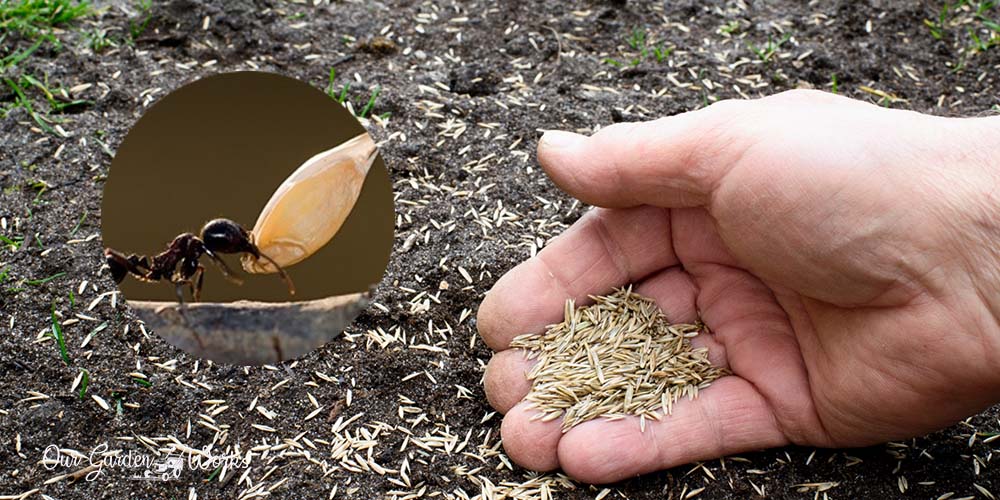As a plant lover, nothing beats the frustration over seeds that are not germinating. Patience can run out and can make you question, why is my grass not growing? (with a creased forehead).
Well, there are several possible reasons why. It can be chemical, physical, or parasitic causes.
In this post, we will share the 10 common reasons why grass seeds are not growing and how you can resolve the problem to save the seeds.
Most of the causes are either putting too much stuff on the lawn or doing the wrong practices that do more harm to the grass than good.
Let’s break down these possible causes below!
Why Is My Grass Not Growing?: 10 Possible Causes
Grass will always have a special place in the heart of every gardener. It makes any space green and gives you a glimpse of the beauty of nature in your tiny yard.
So when the grass seeds fail to grow, it can be a real bummer. Now, here are some possible reasons why:
#1 Grass seeds are buried too deep
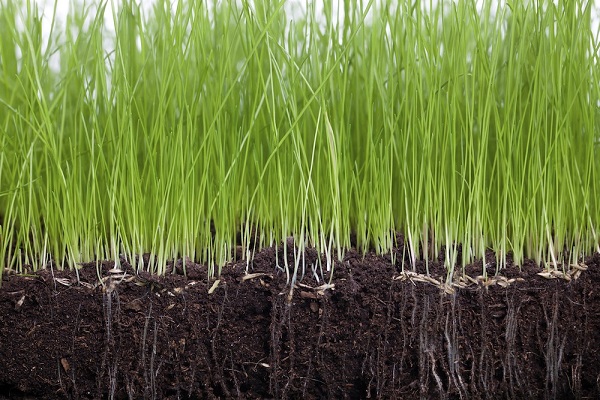
Grass seeds need access to moisture, sunlight, and oxygen to germinate. The ideal depth of grass seeds to achieve their optimal germination rate is ¼ inch below the soil surface.
So, if you try to peek at the seeds, you’ll just need to poke your fingers in the soil to see them.
Otherwise, they’re too deep! Let those seeds breathe and just lightly top-dressing them with soil or a mulch.
#2 Grass seedlings are choked by thick mulch
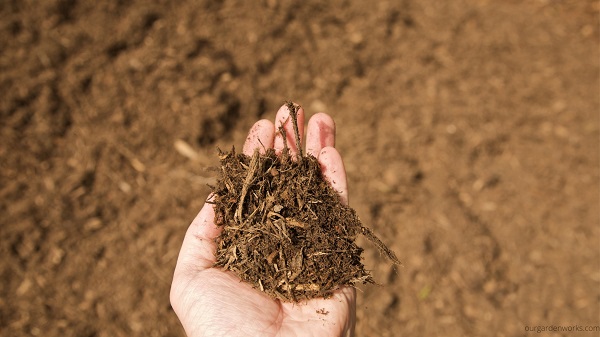
Seeding a lawn and leaving them to grow on its own after a few days is the usual way for most gardeners to grow a lawn.
However, some do the extra mile by mulching the seeds to achieve the ideal germination rate of most, if not all, seeds. However, some people overdo it.
When the layer of mulch is too thick, the seeds will germinate but the seedlings will fail to grow at length.
The mulch will be blocking the growth of the leaves which will affect the development of the plant and inhibit their ability to access sunlight and oxygen above ground.
How to mulch grass seeds properly?
- First, you have to decide the material you want to use as a mulch or seed cover. Here are some of the viable materials that you can choose from:
- Grass cuttings.
- Weed-free wheat straw.
- Compost.
- Peat moss.
- Sawdust.
- Pine straw.
- Seed starter mat.
- Then, spread the grass seed or use a hand spreader.
- Lightly rake the seed into the soil.
- Cover the lawn seeds with a mulch of your preference but make sure to spread it loosely.
- Avoid layering the mulch and make sure that you can still see the soil through the mulch. Keep it ¼ inch thick above the grass seeds.
#3 Ants ate the seeds and put them around mounds
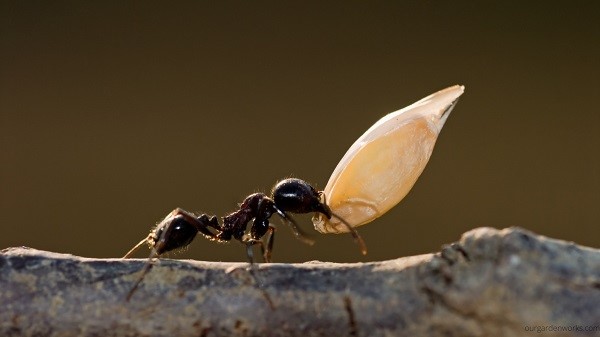
Lawns are not an exception for pests. Ants, of all insects, are probably the worst nuisance you can have on your lawn since they can jeopardize the germination of your grass seeds. They steal the seeds and build unsightly mounds.
In some cases, ants also create tunnels that loosen up the soil and disrupt the root development of grass seedlings.
Ants carry the grass seeds to their nest to feed their young. You will find them carrying the seeds around the entrance of their nests.
Their larvae will feed on the seeds but will leave them unharmed which will cause a chunk of grass seeds to grow on their nest. However, some seeds are buried too deep into the nest which causes them to not germinate.
#4 Lack of soil moisture
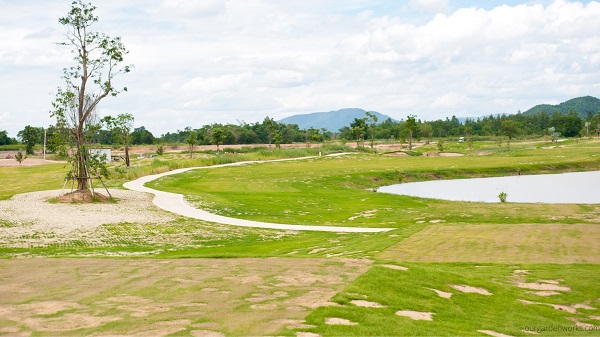
Moisture is one of the vital needs of grass seeds to develop into seedlings. They require daily watering in the first few weeks until they start to get established. The seeds can last for a day or two without water then dry out and fail to germinate.
The ideal watering for newly seeded lawns is two to three times a day for 5 to 10 minutes. Lightly water the grass seeds to prevent them from getting waterlogged.
The best rule of thumb is to do everything in moderation from fertilization to watering.
#5 Temperature changes
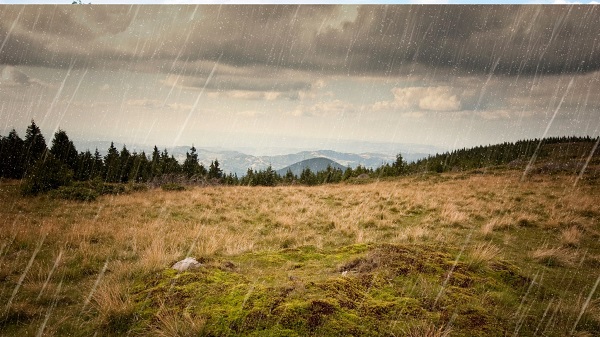
Grass seeds require specific temperatures to germinate just like other plant seeds. Both warm-season and cool-season grass seeds will not survive and germinate in temperatures below 50℉.
Warm-season grass seeds require 70℉ to 90℉ for optimal germination while cool-season grass seeds grow best in temperatures 50℉ to 60℉.
Schedule your lawn seeding when the weather does not fluctuate and at a consistent pace for consecutive days.
#6 Extended exposure of seeds to water
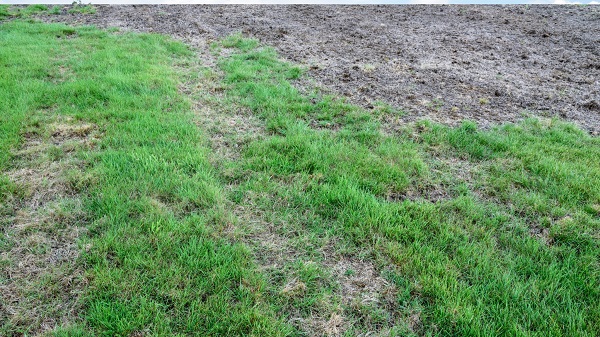
Aside from temperatures, grass seeds not sprouting can be caused by climate and wrong watering habits. Consecutive rainy days will drown the seeds and attract fungal diseases, especially when extensive spring rains come.
Late watering can also soak the seeds and encourage mold growth that compromises seed growth.
The most ideal time to water lawns is early morning so that the grass is hydrated enough at noon and dry at night when the weather is cooler.
#7 Grass injury due to mowing
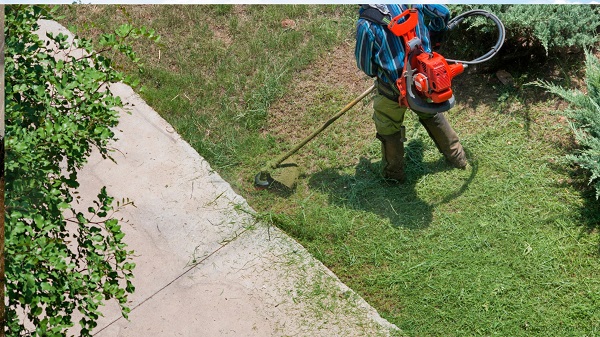
The secret to growing grass is to mow them regularly. However, excessive mowing or cutting the grass too short can cause injury, especially during the first mowing.
The ideal height to cut grass is when they reach 2 to 3 inches long or after three weeks from seeding.
You should only cut ⅓ inch off the grass during the first mowing to prevent grass injury.
Otherwise, the seedlings may stop growing or will require a lot of water to recover. At the same time, they will get weaker which makes them a magnet for pests and fungal diseases.
#8 Compacted or sandy soil
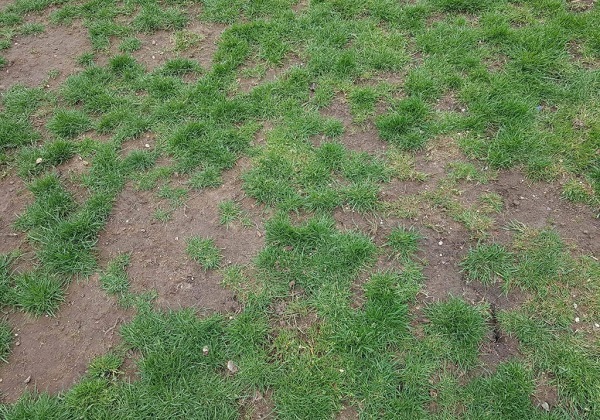
Contrary to usual assumptions, lawn soil does not get compact during dry seasons. It often occurs during spring when it’s wet and heavy rains are pouring almost every other day.
Wet soil compacts faster than dry soil, not to mention when it experiences light foot or animal traffic. Therefore, planting grass in summer might be best if it rains a lot in your region during spring.
When the soil is too compact, the soil particles are too small which creates a mat that traps too much moisture, blocks sunlight, and inhibits proper soil aeration, affecting seed grass germination.
Weeds and moss also love growing in compacted soil which is both the competition of your grass for nutrients and moisture.
Sandy soil, on the other hand, drains water too fast which robs off the moisture from the grassroots.
With a few tweaks to the soil structure, you can still grow healthy grass on sandy soil. We have a separate post on how to modify sandy soil and make it more viable for growing grass here.
#9 Weed Infestation
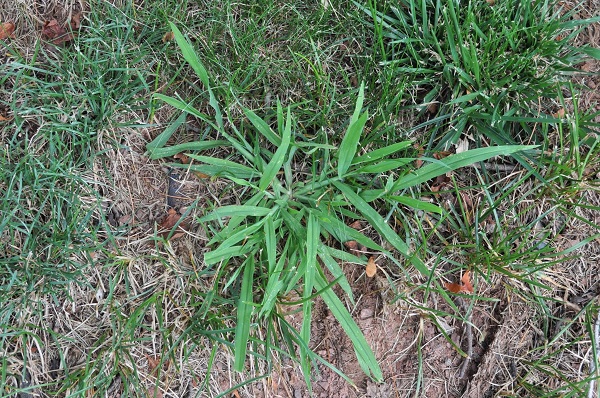
Grass seeds will find it hard to grow on a heavily weed-infested lawn. Weeds will get all the nutrients and moisture in the soil which deprives your grass seeds of everything it needs to survive.
If you’ve been tending your lawn for several growing seasons, you will notice that weeds grow faster than grass. It happens for several reasons, such as
- There are a ton of energized dormant weed seeds in the soil.
- Native weeds find it easier to grow in a region where the weather is favorable to their growth.
- The shade, acidity, and soil compaction make it easier for weeds to grow.
Weeds, in general, are a sign that your lawn soil needs some love and tending. It often happens if you don’t do enough soil preparation like tilling, aeration, and adding soil amendments before seeding. All the more that soil preparation is needed if you have clay soil.
#10 Unbalanced soil pH level
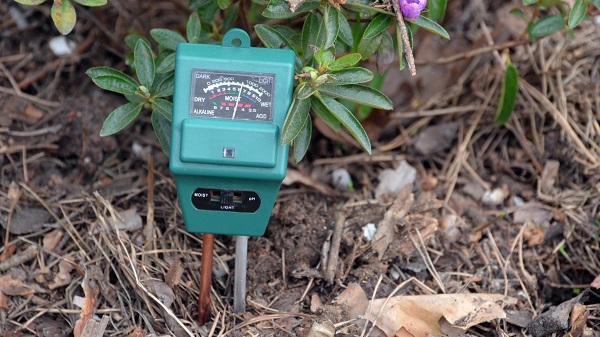
Lawns not growing as desired are sometimes caused by too much soil acidity or alkalinity. Grass seeds and seedling grows best in a slightly acidic soil environment with soil pH level ranging from 6.5 to 7.0.
If the soil is too acidic it will fail to absorb nutrients and die from nutrient deficiency. In worst cases, the seeds won’t even sprout at all.
To know the soil pH level of your lawn, you can use a soil pH meter before seeding. If the results fall from 7 and above, it means the lawn soil range from slightly alkaline to too alkaline.
On the other hand, if the meter is around 6.5 and below, it means that the soil is more on the acidic side.
To raise the soil pH level to balance the acidity, most gardeners use lime. The telltale signs that your lawn needs lime are:
- The seedlings are turning yellow.
- Weeds and moss are starting to compete with grass.
- Lawn pests are getting worse.
- Lawn fertilizers are not working.
- The grass is under drought stress.
If the soil, on the other hand, is too alkaline, most professionals use sulfur to bring in some acidity into the soil. However, rain can naturally make your soil acidic.
So, if the weather forecast says there’s an upcoming rain shower for the next two weeks, you can skip on adding sulfur and let nature do the job itself.
Final Thoughts
The next time you hear someone ask the question, why is my grass not growing, you’ll know that it’s more than just a yes or no.
There are a lot of factors that come into play in grass seed germination and seedling growth and the best way to find the problem is through the elimination process.
Go through the list mentioned in this post and eliminate the ones that are in good status. From there, you’ll be easily able to identify the problem the next time your grass seeds won’t grow.
We hope this post helped give you some answers to your lawn care problems. As a homeowner, tending a lawn is one of the most fulfilling tasks, especially when your neighbors start asking you about it. Through the years, it has become a status quo that helps bring a community together.
Let us know in the comments about your most frequent lawn problems and how you solve them.
Also, don’t forget to share this post with your friends and save them from going through the rabbit hole of lawn care limbo.
